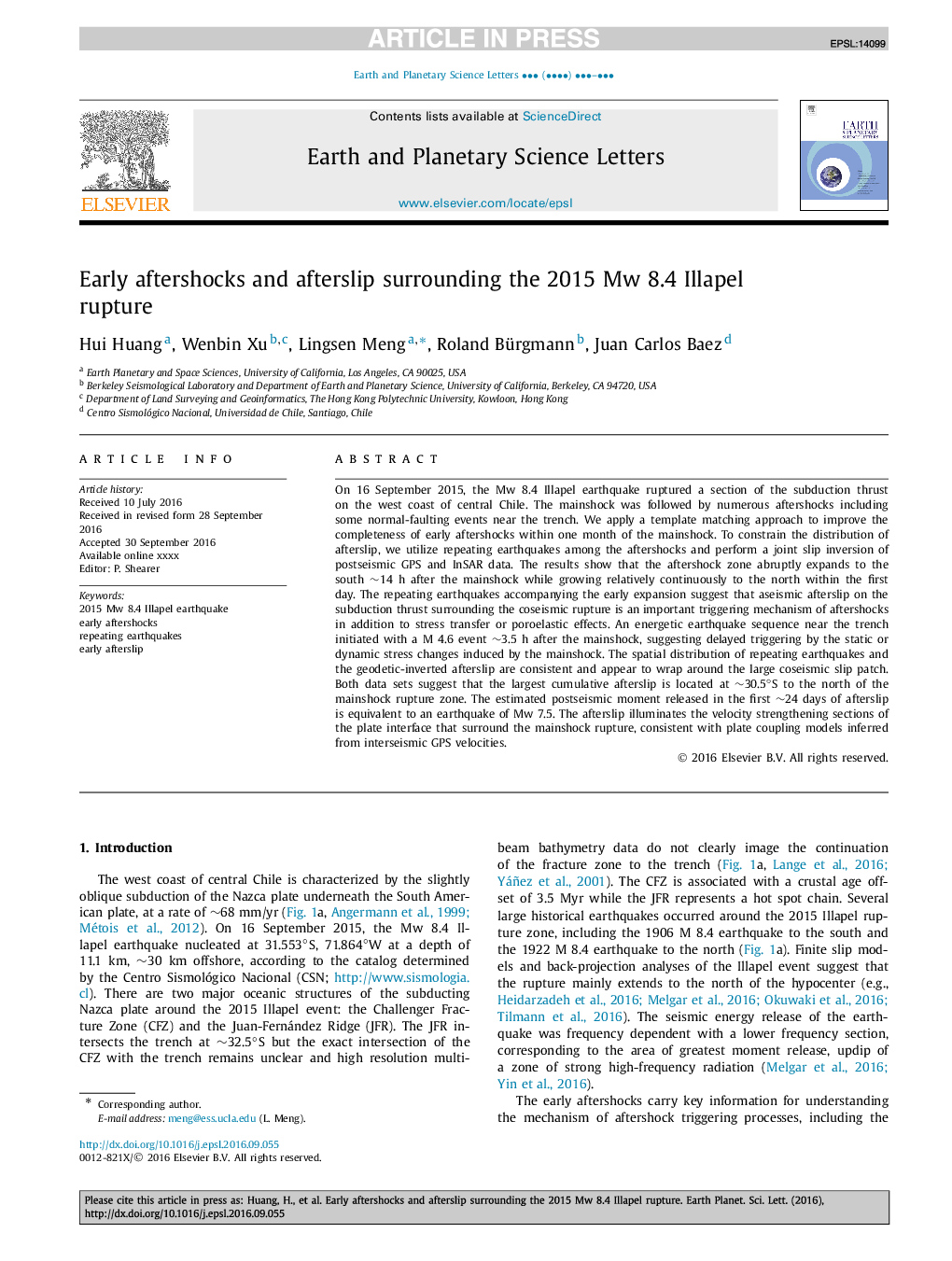| Article ID | Journal | Published Year | Pages | File Type |
|---|---|---|---|---|
| 5780067 | Earth and Planetary Science Letters | 2017 | 10 Pages |
Abstract
On 16 September 2015, the Mw 8.4 Illapel earthquake ruptured a section of the subduction thrust on the west coast of central Chile. The mainshock was followed by numerous aftershocks including some normal-faulting events near the trench. We apply a template matching approach to improve the completeness of early aftershocks within one month of the mainshock. To constrain the distribution of afterslip, we utilize repeating earthquakes among the aftershocks and perform a joint slip inversion of postseismic GPS and InSAR data. The results show that the aftershock zone abruptly expands to the south â¼14 h after the mainshock while growing relatively continuously to the north within the first day. The repeating earthquakes accompanying the early expansion suggest that aseismic afterslip on the subduction thrust surrounding the coseismic rupture is an important triggering mechanism of aftershocks in addition to stress transfer or poroelastic effects. An energetic earthquake sequence near the trench initiated with a M 4.6 event â¼3.5 h after the mainshock, suggesting delayed triggering by the static or dynamic stress changes induced by the mainshock. The spatial distribution of repeating earthquakes and the geodetic-inverted afterslip are consistent and appear to wrap around the large coseismic slip patch. Both data sets suggest that the largest cumulative afterslip is located at â¼30.5°S to the north of the mainshock rupture zone. The estimated postseismic moment released in the first â¼24 days of afterslip is equivalent to an earthquake of Mw 7.5. The afterslip illuminates the velocity strengthening sections of the plate interface that surround the mainshock rupture, consistent with plate coupling models inferred from interseismic GPS velocities.
Keywords
Related Topics
Physical Sciences and Engineering
Earth and Planetary Sciences
Earth and Planetary Sciences (General)
Authors
Hui Huang, Wenbin Xu, Lingsen Meng, Roland Bürgmann, Juan Carlos Baez,
